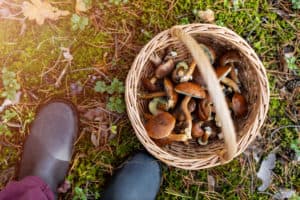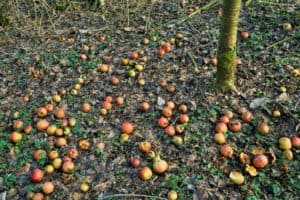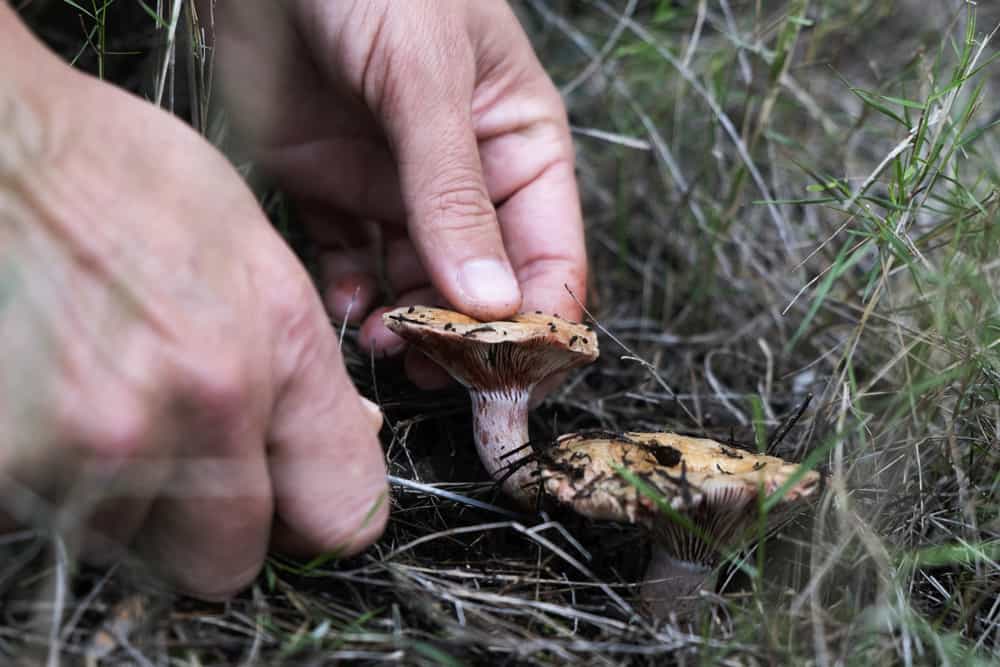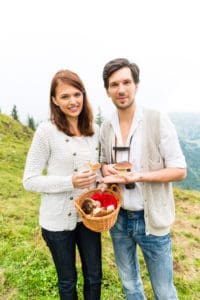Sustainable Mushroom Foraging: If You Love Mushrooms, Protect Them
Foraging mushrooms means many different things to many different people. For some, it is a casual activity, enjoyed on walks and hikes. To others, it is a treasure hunt, with the goal of finding specific species and types. And then, some do it solely for profit.
No matter which type of forager you are, sustaining and maintaining mushroom colonies and growth is of utmost importance. Wreaking havoc on the forests, meadows, and lands that support mycelium networks doesn’t help anyone, especially those hoping to find the mushrooms.

Never Take More Than You Need. Seriously.
When you stumble upon a honey hole of chanterelles or porcini, it is difficult to exercise restraint. After all, there are so many! It seems like there is no way to over-forage.
Though, that is precisely what is happening in forests around the world, with all mushroom species. Excessive foraging reduces future populations. But how?
How many environments have been filled with abundance and then subsequently depleted because humans never imagined the resource could run out? Remember the prairies filled with buffalo? The oceans filled with fish? Every individual’s action makes a difference.
If you take five more fish than you need, and then your neighbor does the same because he saw you do it, and their neighbor takes ten more because he wants to keep up, how long until there aren’t any more left?
Treat mushroom patches like the finite resources they are; treasure them and treat them well and they will return riches.
The Issue With Likening Mushroom Patches to Apple Trees
It is a belief of some that there is no way to over-forage, and the underground mycelium will bounce back regardless of harvesting. The analogy usually given likens mushroom harvesting to picking apples from a tree.
Simply put, an apple tree doesn’t die when you pick all the apples, and therefore, the mycelium doesn’t die when you pick all the mushrooms. This is true.
However, eventually, the apple tree will grow old and stop producing fruit. Maybe it takes 15 years, maybe 50, but eventually, it will stop producing fruit.

Now, if you’ve harvested every single apple every single year, you’ve also harvested every single apple seed. The apples weren’t allowed to fall from the tree, rot, and eventually sprout new saplings. You now have an old, dead, apple tree and no fruit. And, no future fruit either.
Alternately, you can leave some fruit on the apple tree, allow it to drop, see its seeds take root in the ground, and produce more trees. Then, you’ll have apple harvests for hundreds of years.
Mushroom patches need to be treated the same. Pick some. Leave some. Let the spores disperse so there will be fruiting for generations to come.
The Importance of Spores
Mushroom spores are like the seeds of the fungi. When a mushroom reaches full maturity, it releases its spores and then dies. These spores are carried by the wind and settle around the forest.
If they land in a hospitable environment, they will produce mycelium, like branching roots, and seek the nutrition and resources needed to develop a fruiting body (the part you’re seeking out). This article explains mushroom reproduction more in-depth if you’re interested.
A mushroom picked before it releases its spores cannot contribute to reproduction. An entire patch of porcini picked before releasing spores will continue to grow in that patch, but no new patches will have the opportunity to grow because no seeds were distributed. Current actions affect future harvests.
The Three Tenants of Sustainable Mushroom Foraging
- Only harvest 1/2 of any patch of any mushroom. Leave 1/2 behind on the tree or forest floor to reach maturity and spread their spores far and wide.
- When you do harvest, take the older ones, if possible – ones that have already released their spores.
- Tread lightly. Trampling through patches disrupts fragile ecosystems, kills young mushrooms and symbiotic plants, and may inhibit the abundance of future growth.





